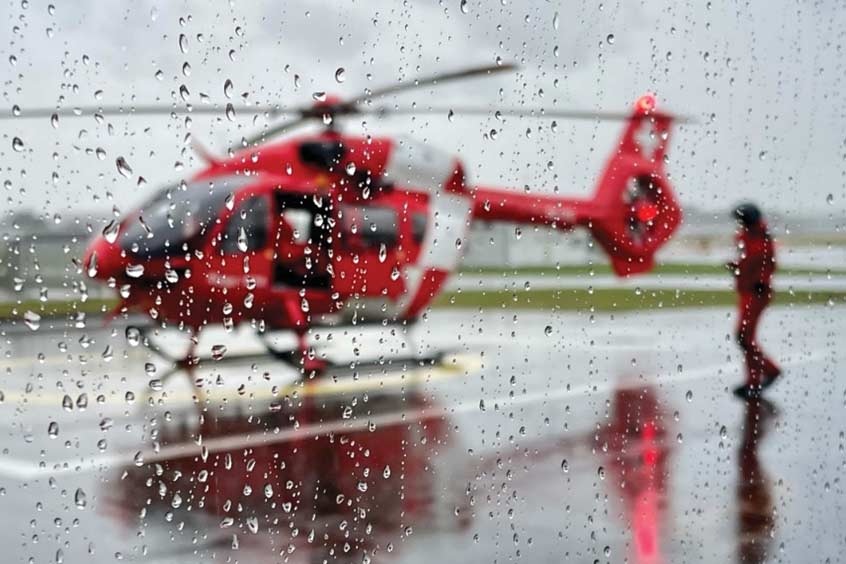Why visit ACE ’25?

European aeromedical service Swiss Air-Rescue Rega says it has become the first helicopter operator in the world to be granted authorisation to use new instrument flight procedures at a hospital. This was made possible by close collaboration between Rega, the Federal Office of Civil Aviation (FOCA), procedure designers and helicopter manufacturer Leonardo. The new approach flight procedures will benefit patients who can be safely flown to Interlaken Hospital or transferred from there to other hospitals for further treatment, even in poor visibility conditions.
For a number of years, Rega has been able to fly in poor visibility to various central hospitals in Switzerland along predefined instrument flight routes with the aid of satellite navigation and onboard computers. All of the flight procedures certified to date are based on the classic RNP approaches. The new RNP-AR (Required Navigation Performance-Authorisation Required) procedure, for which certification has now been granted to Rega for Interlaken Hospital, in combination with the modern navigation equipment in the helicopter, is more accurate than that currently deployed, thus allowing greater precision in navigation. This enables approach flights to be performed safely in highly confined spaces in poor visibility using the autopilot; an advantage in mountainous or adverse terrain. Rega is the first helicopter operator in the world to be certified to use a RNP-AR procedure for approach and departure flights.
Modern RNP-AR procedures make extremely high demands on the navigation precision of the helicopter, and until recently criteria according to which certification could be approved did not exist. Some time ago Rega set itself the goal of being able to use this procedure and so brought together all the various parties who needed to be involved in drawing up these specifications. In the past few years, in close collaboration with FOCA, helicopter procedure designers, helicopter manufacturer Leonardo and other experts, intensive measurement flights were conducted, risk assessments calculated and new instrument flight routes drawn up and tested. As a result, a catalogue of certification criteria was created and Rega was able to submit the necessary supporting documents. Subsequently, FOCA examined the documentation and certified the procedure. Besides the technical demands made on the helicopter, the basic and regular training of Rega cockpit crews in the organisation’s own helicopter simulator is a prerequisite for being able to fly according to the procedure.
Rega points out that this outcome shows that innovation is possible in a strictly regulated environment such as aviation, provided that the various stakeholders work closely together and are willing to work constructively on new solutions.
For many years, Rega has been pursuing its vision of all-weather air rescue and taking measures to be able to help even more people in distress. The Swiss Air Force and Rega have been working together with FOCA for a number of years to develop the so-called Low Flight Network (LFN), a countrywide network of instrument flight routes, and to implement the corresponding approach flight procedures. When visibility is poor, the helicopter flies along a flight route stored in an onboard computer, rather like a motorway. These IFR flight routes link airports, airfields, Rega bases and in particular hospitals with each other.
Currently connected to the LFN are the Inselspital in Berne, University Hospital Zurich, Lucerne Cantonal Hospital, Winterthur Cantonal Hospital, the Swiss Paraplegic Centre in Nottwil, St. Gallen Cantonal Hospital, the Children's Hospital of Eastern Switzerland, Aarau Cantonal Hospital and the hospitals in La Chaux-de-Fonds and Interlaken, as well as the Rega helicopter bases in Berne, Locarno and St. Gallen.
In addition, certification applications for instrument flight procedures at Lausanne University Hospital, Geneva University Hospitals and the hospitals in Rennaz, Chur, Davos, Porrentruy and Delémont are pending.